BLOG - Page 20
Recently created mixtures:

Sea-Buckthorn Macerated oil
February 7, 2019

Home made air freshener
June 29, 2016

Homemade Dog-rose distillate
June 28, 2016

Homemade jasmine distillate
June 22, 2016

Moxibustion treatment with Moxa stick
May 30, 2016

Face and body gentle oil cleanser
May 26, 2016
BLOG / LATEST ADDITIONS!
Cucumber Juice (Cucumis Sativus) ☸ Ingredients ☸ Base / General
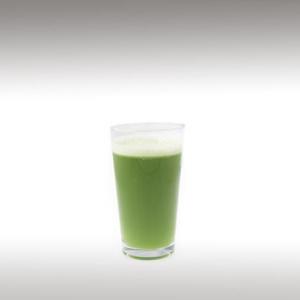

Cucumbers are made up of 95 percent water, making them an ideal hydratingandcooling food.
Cucumber Juice comes from Cucumber, an ediblevegetable. Cucumber belongs to the Melon family, which includes the Watermelon, Squash and Zucchini, which means eating them on a hot summer day can help you stay hydrated.
Cucumbers make an ideal base for your vegetable juice due to theirmild flavor andhigh Water content.
Cucumber Juice comes from Cucumber, an ediblevegetable. Cucumber belongs to the Melon family, which includes the Watermelon, Squash and Zucchini, which means eating them on a hot summer day can help you stay hydrated.
Cucumbers make an ideal base for your vegetable juice due to theirmild flavor andhigh Water content.
As the fourth-most widely cultivated "vegetable" in the world (Cucumbers are technically a fruit), Cucumbers are widely available, but seek to get them from a local farmer's market if you can.
Even better, Cucumbers are very easy to grow, even if you only have access to a patio. They thrive in containers (provide they have somewhere to climb on) and produce ample produce from a small number of plants, so you could try your hand at growing them yourself.
Cucumber plants naturally thrive in both temperate and tropical environments, and generally require temperatures between 60-90°F / 15-33°C. For this reason, they are native to many regions of the world.
In evolutionary terms, the first Cucumbers were likely to have originated in Western Asia (and perhaps more specifically in India) or parts of the Middle East. Cucumbers are mentioned in the legend of Gilgamesh - a Uruk king who lived around 2500 BC in what is now Iraq and Kuwait.
Even better, Cucumbers are very easy to grow, even if you only have access to a patio. They thrive in containers (provide they have somewhere to climb on) and produce ample produce from a small number of plants, so you could try your hand at growing them yourself.
Cucumber plants naturally thrive in both temperate and tropical environments, and generally require temperatures between 60-90°F / 15-33°C. For this reason, they are native to many regions of the world.
In evolutionary terms, the first Cucumbers were likely to have originated in Western Asia (and perhaps more specifically in India) or parts of the Middle East. Cucumbers are mentioned in the legend of Gilgamesh - a Uruk king who lived around 2500 BC in what is now Iraq and Kuwait.
It was approximately 3,300 years later when Cucumber cultivation spread to parts of Europe, including France. And it was not until the time of the European colonists that cucumbers finally appeared in North America in the 1500.
Submitted by OperaDreamhouse (September 15, 2015)
Clove Bud Essential Oil (Eugenia Caryophyllata) ☸ Essential oils ☸ Base / General
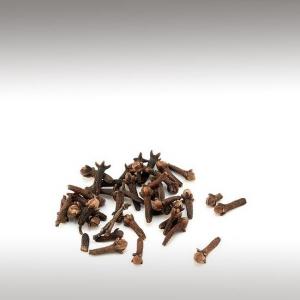

Botanical Name: Eugenia caryophyllata
Common Method of Extraction: Steam distillation
Part Typically Used: Flower bud and stem
Color: Golden Yellow / Brown
Consistency: Medium, slightly oily
Perfumery Note: Middle
Strength of Initial Aroma: Penetrating aroma that is rich, warm, spicy with a fruity top note and a woody base note.
Cloves are the aromatic flower buds of a tree in the family Myrtaceae, Syzygium aromaticum. They are native to the Maluku Islands in Indonesia. Cloves are commercially harvested primarily in Indonesia, India, Madagascar, Zanzibar, Pakistan, Sri Lanka and Tanzania.
Until modern times, Cloves buds grew only on a few islands in the Maluku Islands (historically called the Spice Islands), including Bacan, Makian, Moti, Ternate, and Tidore.
The Clove tree is an evergreen tree that grows up to 8-12 m tall, with large leaves and sanguine flowers grouped in terminal clusters. The flower buds initially have a pale hue, gradually turn green, then transition to a bright red when ready for harvest. Cloves are harvested at 1,5 - 2,0 cm long, and consist of a long calyx that terminates in four spreading sepals, and four unopened petals that form a small central ball.
Once the fragrant Clove buds have been dried, they are steam distilled in order to obtain the essential oil. Clove essential oil can be obtained from either the bud or the leaves. The leaves contain a higher concentration of Eugenol.
Clove comes from a Latin word "Clavus" meaning "Nail".
Archeologists have found Cloves in a ceramic vessel in Syria, with evidence that dates the find to within a few years of 1721 BCE.
Cloves were traded by Muslim sailors and merchants during the Middle Ages in the profitable Indian Ocean trade, the Clove trade is also mentioned by Ibn Battuta and even famous Arabian Nights characters such as Sinbad the Sailor are known to have bought and sold Cloves from India.
In fact, the Clove tree that experts believe is the oldest in the world, named Afo, is on Ternate. The tree is between 350 and 400 years old.
Chemical strucuture:
Eugenol comprises 72-90% of the essential oil extracted from Cloves, and is the compound most responsible for Clove aroma.
Other important essential oilconstituents of Clove oil include acetyl eugenol, beta-caryophyllene and vanillin, crategolic acid, tannins such as bicornin, gallotannic acid, methyl salicylate (painkiller), the flavonoids eugenin, kaempferol, rhamnetin and eugenitin, triterpenoids such as oleanolic acid, stigmasterol and campesterol and several sesquiterpenes.
Common Method of Extraction: Steam distillation
Part Typically Used: Flower bud and stem
Color: Golden Yellow / Brown
Consistency: Medium, slightly oily
Perfumery Note: Middle
Strength of Initial Aroma: Penetrating aroma that is rich, warm, spicy with a fruity top note and a woody base note.
Cloves are the aromatic flower buds of a tree in the family Myrtaceae, Syzygium aromaticum. They are native to the Maluku Islands in Indonesia. Cloves are commercially harvested primarily in Indonesia, India, Madagascar, Zanzibar, Pakistan, Sri Lanka and Tanzania.
Until modern times, Cloves buds grew only on a few islands in the Maluku Islands (historically called the Spice Islands), including Bacan, Makian, Moti, Ternate, and Tidore.
The Clove tree is an evergreen tree that grows up to 8-12 m tall, with large leaves and sanguine flowers grouped in terminal clusters. The flower buds initially have a pale hue, gradually turn green, then transition to a bright red when ready for harvest. Cloves are harvested at 1,5 - 2,0 cm long, and consist of a long calyx that terminates in four spreading sepals, and four unopened petals that form a small central ball.
Once the fragrant Clove buds have been dried, they are steam distilled in order to obtain the essential oil. Clove essential oil can be obtained from either the bud or the leaves. The leaves contain a higher concentration of Eugenol.
Clove comes from a Latin word "Clavus" meaning "Nail".
Archeologists have found Cloves in a ceramic vessel in Syria, with evidence that dates the find to within a few years of 1721 BCE.
Cloves were traded by Muslim sailors and merchants during the Middle Ages in the profitable Indian Ocean trade, the Clove trade is also mentioned by Ibn Battuta and even famous Arabian Nights characters such as Sinbad the Sailor are known to have bought and sold Cloves from India.
In fact, the Clove tree that experts believe is the oldest in the world, named Afo, is on Ternate. The tree is between 350 and 400 years old.
Chemical strucuture:
Eugenol comprises 72-90% of the essential oil extracted from Cloves, and is the compound most responsible for Clove aroma.
Other important essential oilconstituents of Clove oil include acetyl eugenol, beta-caryophyllene and vanillin, crategolic acid, tannins such as bicornin, gallotannic acid, methyl salicylate (painkiller), the flavonoids eugenin, kaempferol, rhamnetin and eugenitin, triterpenoids such as oleanolic acid, stigmasterol and campesterol and several sesquiterpenes.
Submitted by OperaDreamhouse (July 30, 2015)
Musk Rose Oil (Rosa Moschata) ☸ Base oils ☸ Base / General
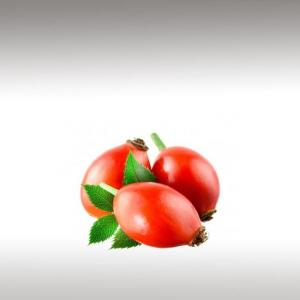

Rosa Moschata (Musk Rose) is a species of Rose long in cultivation. Its wild origins are uncertain but are suspected to lie in the western Himalayas.
Rose Moschata is a shrub (to 3m) with single white 5 cm flowers in a loose cyme or corymb, blooming on new growth from late spring until late autumn in warm climates, or from late summer onwards in cool - summer climates. The sepals are 2 cm long with slender points. The flowers have a characteristic "Musky" scent, emanating from the stamens, which is also found in some of its descendants.
Rosa Moschata (Musk Rose) is a species of rose native to Europe or Asia, it is now grown in Chile in rainy and cold climates.
Rosa Moschata is native to the areas Chile and Argentina. However, it is this from southern Chile, as it grows in demanding climates, unspoilt, clean, wet wilds of Patagonia, due to it's chemical composition and properties of regeneration is considered as the best raw material for the production of oil Rosa Mosqueta (Rose Hip Oil).
It has been contended that no truly wild examples of the Musk Rose have been found, though it is recorded in cultivation as least as far back as the 16th century.
Chemical strucutre :
Natural oil from the seeds of wild Musk Rose contains transretinoic acid, omega - 6, omega - 3 and Vitamin A.
This oil is very rich in Vitamins A, C, E, B1 and B2 and polyunsaturated fatty acids omega - 6 and omega - 3, accompanied by a high concentration of natural antioxidants, such as Vitamin E and Beta - Carotene.
Rose Moschata is a shrub (to 3m) with single white 5 cm flowers in a loose cyme or corymb, blooming on new growth from late spring until late autumn in warm climates, or from late summer onwards in cool - summer climates. The sepals are 2 cm long with slender points. The flowers have a characteristic "Musky" scent, emanating from the stamens, which is also found in some of its descendants.
Rosa Moschata (Musk Rose) is a species of rose native to Europe or Asia, it is now grown in Chile in rainy and cold climates.
Rosa Moschata is native to the areas Chile and Argentina. However, it is this from southern Chile, as it grows in demanding climates, unspoilt, clean, wet wilds of Patagonia, due to it's chemical composition and properties of regeneration is considered as the best raw material for the production of oil Rosa Mosqueta (Rose Hip Oil).
It has been contended that no truly wild examples of the Musk Rose have been found, though it is recorded in cultivation as least as far back as the 16th century.
Chemical strucutre :
Natural oil from the seeds of wild Musk Rose contains transretinoic acid, omega - 6, omega - 3 and Vitamin A.
This oil is very rich in Vitamins A, C, E, B1 and B2 and polyunsaturated fatty acids omega - 6 and omega - 3, accompanied by a high concentration of natural antioxidants, such as Vitamin E and Beta - Carotene.
Submitted by OperaDreamhouse (July 10, 2015)
Chinese Cassia Essential Oil (Cinnamomum Cassia) ☸ Essential oils ☸ Base / General
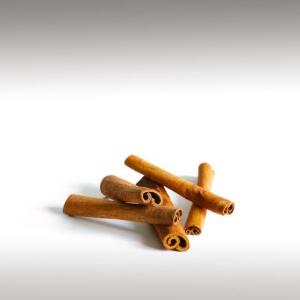

Botanical Name: Cinnamomum cassia
Common Method of Extraction: Steam distilled
Part Typically Used: Bark and leaf
Color: Light golden yellow to golden yellow
Consistency: Medium
Perfumery Note: Top
Strength of Initial Aroma: Warm pungent smell.
Cinnamomum cassia, called Chinese Cassia or Chinese Cinnamon, is an evergreen tree originating in southern China, and widely cultivated there and elsewhere in southern and eastern Asia (India, Indonesia, Laos, Malaysia, Taiwan, Thailand, and Vietnam).
The tree grows to 10-15 m tall, with greyish bark and hard, elongated leaves that are 10-15 cm long and have a decidedly reddish colour when young.
It is one of several species of Cinnamomum used primarily for their aromatic bark, which is used as a spice.
Chinese Cassia is a close relative to Ceylon Cinnamon (Cinnamomum Verum), Saigon Cinnamon (Cinnamomum Loureiroi, also known as "Vietnamese Cinnamon"), and Indonesian Cinnamon (Cinnamomum Burmannii). In all four species, the dried bark is used as a spice. Chinese Cassia's flavour is less delicate than that of Ceylon Cinnamon. Its bark is thicker, more difficult to crush, and has a rougher texture than that of Ceylon Cinnamon.
Evidently originating in China, now widely cultivated in tropical or subtropical areas of Fujian, Guangdong, Guangxi, Guizhou, Hainan, Taiwan, and Yunnan.
When the trees are six to eight years old, the bark is removed in long strips and left to dry in the hot sun. These strips roll up into tubes, the "quills" familiar as the culinary spice. An inner corky layer is stripped for Cinnamon, but is left in place with Cassia, which is redder in colour, often chipped, and more coarsely pungent than Cinnamon. To give the bark time to grow again, it is removed about every two years, and it is said that a good tree can produce for almost 200 years.
The dried bark is the source of the important spice Cassia. The immature fruits are a source of Cassia buds. An essential oil, called oil of Cassia or oil of Cinnamon, is obtained by steam distillation of the leaves, twigs and bark. It is used as a flavoring agent.
The consistency of Cassia is thicker, and it is less subtle and aromatic the another Cinnamomum speaces.
Cinnamon was utilized extensively thousands of years ago and is still popular today. Enjoyed since ancient times, Cinnamon was mentioned in ancient Egyptian texts, the Bible, and was widely traded thousands of years ago in Europe and in Asia by Arab spice traders.
Cinnamomum appears in recorded history dating back to at least 1,700 years B.C.E where it was a component of embalming fluid in ancient Egypt.
The spice is mentioned in the Bible under the name of "Quesiah". In Exodus, God told Moses to take Myrrh, Cinnamon, Olive oil and bulrushes with him from Egypt. The Ancient Egyptians were known to have used it to keep epidemics at bay, and in embalming.
Chemical structure:
The principal constituents: Cinnamon - cinnamic aldehyde (60-65%), caryophyllene, cymene, eugenol, linalool, methylamine ketone which gives the characteristic aroma, phellandrene, pineneand many others. Cassia contains a higher proportion of cinnamic aldehyde, as much as 80 - 85%.
Common Method of Extraction: Steam distilled
Part Typically Used: Bark and leaf
Color: Light golden yellow to golden yellow
Consistency: Medium
Perfumery Note: Top
Strength of Initial Aroma: Warm pungent smell.
Cinnamomum cassia, called Chinese Cassia or Chinese Cinnamon, is an evergreen tree originating in southern China, and widely cultivated there and elsewhere in southern and eastern Asia (India, Indonesia, Laos, Malaysia, Taiwan, Thailand, and Vietnam).
The tree grows to 10-15 m tall, with greyish bark and hard, elongated leaves that are 10-15 cm long and have a decidedly reddish colour when young.
It is one of several species of Cinnamomum used primarily for their aromatic bark, which is used as a spice.
Chinese Cassia is a close relative to Ceylon Cinnamon (Cinnamomum Verum), Saigon Cinnamon (Cinnamomum Loureiroi, also known as "Vietnamese Cinnamon"), and Indonesian Cinnamon (Cinnamomum Burmannii). In all four species, the dried bark is used as a spice. Chinese Cassia's flavour is less delicate than that of Ceylon Cinnamon. Its bark is thicker, more difficult to crush, and has a rougher texture than that of Ceylon Cinnamon.
Evidently originating in China, now widely cultivated in tropical or subtropical areas of Fujian, Guangdong, Guangxi, Guizhou, Hainan, Taiwan, and Yunnan.
When the trees are six to eight years old, the bark is removed in long strips and left to dry in the hot sun. These strips roll up into tubes, the "quills" familiar as the culinary spice. An inner corky layer is stripped for Cinnamon, but is left in place with Cassia, which is redder in colour, often chipped, and more coarsely pungent than Cinnamon. To give the bark time to grow again, it is removed about every two years, and it is said that a good tree can produce for almost 200 years.
The dried bark is the source of the important spice Cassia. The immature fruits are a source of Cassia buds. An essential oil, called oil of Cassia or oil of Cinnamon, is obtained by steam distillation of the leaves, twigs and bark. It is used as a flavoring agent.
The consistency of Cassia is thicker, and it is less subtle and aromatic the another Cinnamomum speaces.
Cinnamon was utilized extensively thousands of years ago and is still popular today. Enjoyed since ancient times, Cinnamon was mentioned in ancient Egyptian texts, the Bible, and was widely traded thousands of years ago in Europe and in Asia by Arab spice traders.
Cinnamomum appears in recorded history dating back to at least 1,700 years B.C.E where it was a component of embalming fluid in ancient Egypt.
The spice is mentioned in the Bible under the name of "Quesiah". In Exodus, God told Moses to take Myrrh, Cinnamon, Olive oil and bulrushes with him from Egypt. The Ancient Egyptians were known to have used it to keep epidemics at bay, and in embalming.
Chemical structure:
The principal constituents: Cinnamon - cinnamic aldehyde (60-65%), caryophyllene, cymene, eugenol, linalool, methylamine ketone which gives the characteristic aroma, phellandrene, pineneand many others. Cassia contains a higher proportion of cinnamic aldehyde, as much as 80 - 85%.
Submitted by OperaDreamhouse (July 1, 2015)
Andiroba Oil (Carapa Guianensis) ☸ Base oils ☸ Base / General
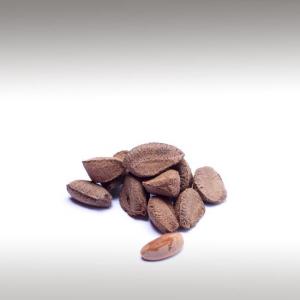

Carapa Guianensis is a genus of flowering plants in the mahogany family, Meliaceae. These are trees up to 30 meters tall occurring in tropical South America, Central America and Africa. Common names include Andiroba and Crabwood.
In the Amazon rainforest region, Andiroba oil is an herbal oil that is widely used by the local population to treat several inflammatory diseases.
The tree grows in the Amazon region, Central America and the Caribbean. It is a tall tree with dense foliage, which usually grows in the tropical rain forest along the edge of rivers. The wood resembles mahogany and is used in quality furniture.
From the seeds is derived a plant oil which have medicinal properties.
The name andiroba is from Nheengatu nhandi rob, meaning "Bitter oil". Carapa Guianensis producesoil similar to Neem oil.
Andiroba oil is extracted from light brown seeds collected from beaches and rivers, where they float after being shed by the trees or from the forest ground.
The oil contained in the Andiroba almond is light yellow and extremely bitter. When subjected to a temperature below 25 °C, solidifies, leaving consistency like that of petroleum jelly. Contains substances likeolein, palmitine and the Glycerin.
In the Amazon rainforest region, Andiroba oil is an herbal oil that is widely used by the local population to treat several inflammatory diseases.
The tree grows in the Amazon region, Central America and the Caribbean. It is a tall tree with dense foliage, which usually grows in the tropical rain forest along the edge of rivers. The wood resembles mahogany and is used in quality furniture.
From the seeds is derived a plant oil which have medicinal properties.
The name andiroba is from Nheengatu nhandi rob, meaning "Bitter oil". Carapa Guianensis producesoil similar to Neem oil.
Andiroba oil is extracted from light brown seeds collected from beaches and rivers, where they float after being shed by the trees or from the forest ground.
The oil contained in the Andiroba almond is light yellow and extremely bitter. When subjected to a temperature below 25 °C, solidifies, leaving consistency like that of petroleum jelly. Contains substances likeolein, palmitine and the Glycerin.
Submitted by OperaDreamhouse (June 30, 2015)
Stinging Nettle Plant (Urtica Incisa) ☸ Plants ☸ Base / General
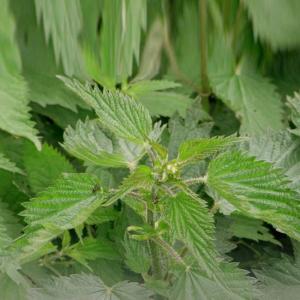

The Nettle family are also host plants for the Yellow Admiral caterpillars. There are many kinds of Nettles 30 - 45 species, although not every plant with "Nettle" in the name is from the Nettle family, Urtica.
Urtica Incisa, commonly called scrub Nettle, Stinging Nettle, and Tall Nettle, is an up - right perennial herbnative to streams and rainforest of eastern and southern Australia, from the north - east southwards through the east, of Queensland and New South Wales, then across the south, through Victoria, Tasmania, south-eastern South Australia and parts of southern Western Australia.
Scrub Nettle leaves are triangular and opposite, 5 - 12 cm long, with serrated margins and stinging hairs.
Height variously reported between 40cm and 2m. Leaves 5 - 12 cm. Likes shade or mild sun and a sheltered spot.
These soft herbs occur as weeds in damp areas and are sparsely covered with rigid, stinging hairs. The leaves are opposite to each other on the stem and have serrated margins.
Urtica Incisa, commonly called scrub Nettle, Stinging Nettle, and Tall Nettle, is an up - right perennial herbnative to streams and rainforest of eastern and southern Australia, from the north - east southwards through the east, of Queensland and New South Wales, then across the south, through Victoria, Tasmania, south-eastern South Australia and parts of southern Western Australia.
Scrub Nettle leaves are triangular and opposite, 5 - 12 cm long, with serrated margins and stinging hairs.
Height variously reported between 40cm and 2m. Leaves 5 - 12 cm. Likes shade or mild sun and a sheltered spot.
These soft herbs occur as weeds in damp areas and are sparsely covered with rigid, stinging hairs. The leaves are opposite to each other on the stem and have serrated margins.
The two species are very similar but the leaves of the perennial Stinging Nettle (Urtica Incisa) are tapered into a point, whereas the annual small Singing Nettle (Urtica Urens) has a more rounded tip. The flowers are small and greenish in colour. The fruit are minute, seed - like and enclosed in the flower parts.
Contact with the stinging hairs can result in local reddening and itching, swelling and an intense burning sensation. These symptoms are usually of short duration but may last up to 36 hours in sensitive individual.
Nettke is an annual plant. Germinates from autumn to spring. Flowers July to December. Nettle reproduction is by seed.
Contact with the stinging hairs can result in local reddening and itching, swelling and an intense burning sensation. These symptoms are usually of short duration but may last up to 36 hours in sensitive individual.
Nettke is an annual plant. Germinates from autumn to spring. Flowers July to December. Nettle reproduction is by seed.
Submitted by OperaDreamhouse (June 30, 2015)
Vitamin E Oil (D-alpha Tocopherol) ☸ Ingredients ☸ Base / General
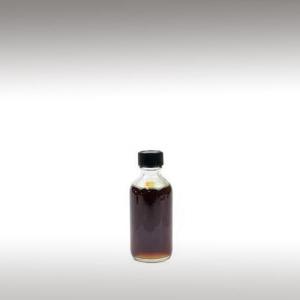

Vitamin E is a Vitamin that dissolves in fat. It is found in many foods including vegetable oils, cereals, meat, poultry, eggs, fruits, vegetables, and wheat Germ oil. It is also available as a supplement.
Vitamin E was discovered in 1922 by Herbert McLean Evans and Katharine Scott Bishop and first isolated in a pure form by Gladys Anderson Emerson in 1935 at the University of California, Berkeley. Erhard Fernholz elucidated its structure in 1938 and shortly afterwards the same year, Paul Karrer and his team first synthesized it.
Vitamin E (Tocopherol) activity was first identified in 1936 from a dietary fertility factor in rats, it was given the name "Tocopherol" from the Greek words "Tókos", birth, and "Phérein", to bear or carry meaning in sum "to Carry a Pregnancy", with the ending "-ol" signifying its status as a chemical alcohol.
The first use for Vitamin E as a therapeutic agent was conducted in 1938 by Widenbauer, who used wheat Germ oil supplement on 17 premature newborn infants suffering from growth failure.
Vitamin E oil is obtained by vacuum distillation of vegetable fats derived from non-GMO Soy, Wheat Germ sources.
Naturally occurring Vitamin E exists in eight chemical forms (alpha-, beta-, gamma-, and delta-Tocopherol and alpha-, beta-, gamma-, and delta - Tocotrienol) that have varying levels of biologicalactivity.
Vitamin E was discovered in 1922 by Herbert McLean Evans and Katharine Scott Bishop and first isolated in a pure form by Gladys Anderson Emerson in 1935 at the University of California, Berkeley. Erhard Fernholz elucidated its structure in 1938 and shortly afterwards the same year, Paul Karrer and his team first synthesized it.
Vitamin E (Tocopherol) activity was first identified in 1936 from a dietary fertility factor in rats, it was given the name "Tocopherol" from the Greek words "Tókos", birth, and "Phérein", to bear or carry meaning in sum "to Carry a Pregnancy", with the ending "-ol" signifying its status as a chemical alcohol.
The first use for Vitamin E as a therapeutic agent was conducted in 1938 by Widenbauer, who used wheat Germ oil supplement on 17 premature newborn infants suffering from growth failure.
Vitamin E oil is obtained by vacuum distillation of vegetable fats derived from non-GMO Soy, Wheat Germ sources.
Naturally occurring Vitamin E exists in eight chemical forms (alpha-, beta-, gamma-, and delta-Tocopherol and alpha-, beta-, gamma-, and delta - Tocotrienol) that have varying levels of biologicalactivity.
Alpha- (or α-) Tocopherol is the only form that is recognized to meet human requirements.
A natural D-Mixed Tocopherol which is a mixture of all the natural Vitamin E isomers not just the alphatocopherol. It offers a very good balance of suitability for use as a skin conditioning agent and also as an antioxidant in oil phase products.
Chemical structure:
Total Tocopherol Content (Mixed): 18 - 20%
D Alpha Tocopherol: 9 -10%
D Beta and Gamma Tocopherol: 49 - 53%
D Delta Tocopherol: 38 - 42%
Sterols: 9,5%
Squalene: 4,7%
Monoglycerides: 19,5%
Chemical structure:
Total Tocopherol Content (Mixed): 18 - 20%
D Alpha Tocopherol: 9 -10%
D Beta and Gamma Tocopherol: 49 - 53%
D Delta Tocopherol: 38 - 42%
Sterols: 9,5%
Squalene: 4,7%
Monoglycerides: 19,5%
Submitted by OperaDreamhouse (June 30, 2015)
Andiroba Oil (Carapa Guianensis) ☸ Base oils ☸ Medicine / Health


Andiroba oil is an anti-inflammatory oil rich in omega-3 fatty acids that promote skin healing from cuts and may slow the growth of skin cells in psoriasis and age spots.
It promotes normalcirculation to the skin and relieves pain and swelling. Andiroba oil is used in heated massage to relieve arthritis.
It promotes normalcirculation to the skin and relieves pain and swelling. Andiroba oil is used in heated massage to relieve arthritis.
Submitted by OperaDreamhouse (June 30, 2015)
Menthol Crystals ☸ Ingredients ☸ Base / General
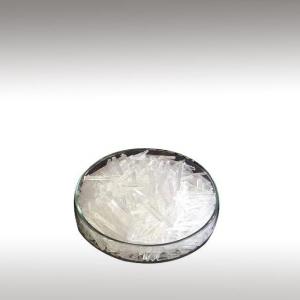

Menthol is an organic compound made synthetically or obtained from Corn Mint, Peppermint or other Mint oils. It is a waxy, crystallinesubstance, clear or white in color, which is solid at room temperature and melts slightly above.
Menthol is the solid constituent of oil of Mint, to which the characteristic odor is due. Menthol is obtained by subjecting the distilled oil to a temperature of - 22ºC by aid of a freezing mixture. The Menthol crystallizes out in satiny Crystals.
They dissolve readily into alcohol or essential oils, and they can be dissolved into water or oil at their melting point of 18 C.
Menthol Crystals are cooling, refreshing, and have a pleasantly strong Minty aroma.
Since Menthol Crystals are so concentrated, only a very small amount is needed within products.
They are often used in cosmetics, salves, balms, medicated creams, throat lozenges, toothpaste, mouthwash, gum, foot sprays, pain relief, shampoos, conditioners, ointments, shaving creams, oral or throat sprays, compresses, medicated oils, and cooling gels.
Mentha Arvensis is the primary species of Mint used to make natural Menthol Crystals and natural Menthol Flakes. This species is primarily grown in the Uttar Pradesh region in India.
There is evidence that Menthol has been known in Japan for more than 2000 years, but in the West it was not isolated until 1771, by Hieronymus David Gaubius.
Menthol is the solid constituent of oil of Mint, to which the characteristic odor is due. Menthol is obtained by subjecting the distilled oil to a temperature of - 22ºC by aid of a freezing mixture. The Menthol crystallizes out in satiny Crystals.
They dissolve readily into alcohol or essential oils, and they can be dissolved into water or oil at their melting point of 18 C.
Menthol Crystals are cooling, refreshing, and have a pleasantly strong Minty aroma.
Since Menthol Crystals are so concentrated, only a very small amount is needed within products.
They are often used in cosmetics, salves, balms, medicated creams, throat lozenges, toothpaste, mouthwash, gum, foot sprays, pain relief, shampoos, conditioners, ointments, shaving creams, oral or throat sprays, compresses, medicated oils, and cooling gels.
Mentha Arvensis is the primary species of Mint used to make natural Menthol Crystals and natural Menthol Flakes. This species is primarily grown in the Uttar Pradesh region in India.
There is evidence that Menthol has been known in Japan for more than 2000 years, but in the West it was not isolated until 1771, by Hieronymus David Gaubius.
Crystal size - 1 / 4 - 3 / 8 inch shards.
Submitted by OperaDreamhouse (June 25, 2015)
Camphor Crystals (Cinnamomum Camphora) ☸ Ingredients ☸ Base / General
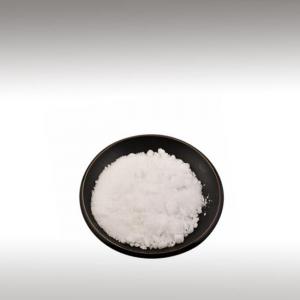

Camphor is a waxy, flammable, white or transparent solid with a strong aromatic odor. It is a Terpenoid with the chemical formula C10H16O.
It is found in the wood of the Camphor Laurel (Cinnamomum Camphora), a large evergreen tree found in Asia (Sumatra, Indonesia and Borneo ) and also of the unrelated Kapur tree, a tall timber tree from the same region.
It also occurs in some other related trees in the Laurel family, notably Ocotea Usambarensis. Dried Rosemary leaves (Rosmarinus Officinalis), in the Mint family, contain up to 20% Camphor.
It is used for its scent, as an ingredient in cooking (mainly in India), as an embalming fluid, for medicinal purposes, and in religious ceremonies. A major source of Camphor in Asia is Camphor Basil.
Camphor can also be synthetically produced from oil of turpentine, but we will talk about organic camphor ( Camphor Laurel (Cinnamomum Camphora)).
These plants are literally taking energy produced by the sun, combining it with oxygen, and producing miraculous pharmacological wonders.
The clippings, roots and wood chips of the camphor tree are processed to produce Camphor Crystals and Camphor oil. The sturdy tree has glossy dark green aromatic leaves. The wood repels insects, moths, and is very durable against the erosion of salt air. In days gone by, the wood was used by sailors to moth - proof their clothes.
Camphor derived from a natural cold extraction process of the Camphor tree, these Crystals are not chemicallyproduced.
The word "Camphor" derives from the French word "Camphre", itself from Medieval Latin "Camfora", from Arabic "Kafur", from Sanskrit "Karpūram".
The term ultimately was derived from Old Malay Kapur Barus which means "the Chalk of Barus". Barus was the name of an ancient port located near modern Sibolga city on the western coast of Sumatra island (North Sumatra Province, Indonesia). This port was initially built prior to the Indian - Batak trade in Camphor and spices.
Traders from India, East Asia and the Middle East would use the term Kapur Barus to buy the dried extracted ooze of Camphor trees from local Batak tribesmen. The Camphor tree itself is natively found in that region. In the proto - Malay - Austronesian language, it is also known as Kapur Barus. Even now, the localtribespeople and Indonesians in general refer to naphthalene balls and moth balls as Kapur Barus.
Camphor is widely used in Hindu religious ceremonies. Hindus worship a holy flame by burning Camphor, which forms an important part of manyreligious ceremonies.
Camphor is used in the Mahashivratri celebrations of Shiva, the Hindu god of destruction and (re)creation. As a natural pitch substance, it burns cool without leaving an ash residue, which symbolizes consciousness.
Chemical structure:
Chemical wise, the plant that produces this constituent is chalked full of volatile chemical compounds that make the plant valuable for human beings (ethnobotany).
It is found in the wood of the Camphor Laurel (Cinnamomum Camphora), a large evergreen tree found in Asia (Sumatra, Indonesia and Borneo ) and also of the unrelated Kapur tree, a tall timber tree from the same region.
It also occurs in some other related trees in the Laurel family, notably Ocotea Usambarensis. Dried Rosemary leaves (Rosmarinus Officinalis), in the Mint family, contain up to 20% Camphor.
It is used for its scent, as an ingredient in cooking (mainly in India), as an embalming fluid, for medicinal purposes, and in religious ceremonies. A major source of Camphor in Asia is Camphor Basil.
Camphor can also be synthetically produced from oil of turpentine, but we will talk about organic camphor ( Camphor Laurel (Cinnamomum Camphora)).
These plants are literally taking energy produced by the sun, combining it with oxygen, and producing miraculous pharmacological wonders.
The clippings, roots and wood chips of the camphor tree are processed to produce Camphor Crystals and Camphor oil. The sturdy tree has glossy dark green aromatic leaves. The wood repels insects, moths, and is very durable against the erosion of salt air. In days gone by, the wood was used by sailors to moth - proof their clothes.
Camphor derived from a natural cold extraction process of the Camphor tree, these Crystals are not chemicallyproduced.
The word "Camphor" derives from the French word "Camphre", itself from Medieval Latin "Camfora", from Arabic "Kafur", from Sanskrit "Karpūram".
The term ultimately was derived from Old Malay Kapur Barus which means "the Chalk of Barus". Barus was the name of an ancient port located near modern Sibolga city on the western coast of Sumatra island (North Sumatra Province, Indonesia). This port was initially built prior to the Indian - Batak trade in Camphor and spices.
Traders from India, East Asia and the Middle East would use the term Kapur Barus to buy the dried extracted ooze of Camphor trees from local Batak tribesmen. The Camphor tree itself is natively found in that region. In the proto - Malay - Austronesian language, it is also known as Kapur Barus. Even now, the localtribespeople and Indonesians in general refer to naphthalene balls and moth balls as Kapur Barus.
Camphor is widely used in Hindu religious ceremonies. Hindus worship a holy flame by burning Camphor, which forms an important part of manyreligious ceremonies.
Camphor is used in the Mahashivratri celebrations of Shiva, the Hindu god of destruction and (re)creation. As a natural pitch substance, it burns cool without leaving an ash residue, which symbolizes consciousness.
Chemical structure:
Chemical wise, the plant that produces this constituent is chalked full of volatile chemical compounds that make the plant valuable for human beings (ethnobotany).
Volatile is a term that desribes compounds that can be vaporized. This tree contains Camphor, linalool, 1,8 - cineole, nerolidol, safrole, and borneol. Safrole is also present in Sassafrass root.
Camphor is one of the mainly prized compounds present in the species. It is a white crystalline substance that has a history of use as a medicine and holy incense.
Submitted by OperaDreamhouse (June 25, 2015)
Maple Syrup ☸ Ingredients ☸ Base / General
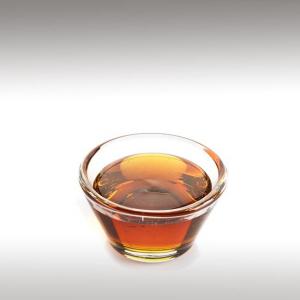

Maple Syrup is a Syrup usually made from the Xylem Sap of Sugar Maple, Red Maple, or Black Maple trees, although it can also be made from other maple species.
Three species of maple trees are predominantly used to produce Maple Syrup: the Sugar Maple (Acer Saccharum), the Black Maple (Acer Nigrum), and the Red Maple (Acer Rubrum), because of the high sugar content (roughly 2 - 5%) in the sap of these species.
Three species of maple trees are predominantly used to produce Maple Syrup: the Sugar Maple (Acer Saccharum), the Black Maple (Acer Nigrum), and the Red Maple (Acer Rubrum), because of the high sugar content (roughly 2 - 5%) in the sap of these species.
The Black Maple is included as a subspecies or variety in a more broadly viewed concept of Acer saccharum, the sugar Maple, by some botanists. Of these, the Red Maple has a shorter season because it buds earlier than sugar and Black Maples, which alters the flavour of the sap.
The Canadian province of Quebec is by far the largest producer, responsible for about three - quarters of the world's output.
Vermont is the largest producer in the United States, generating about 5,5% of the global supply.
In cold climates, these trees store starch in their trunks and roots before the winter, the starch is then converted to sugar that rises in the sap in the spring.
Maple trees can be tapped by boring holes into their trunks and collecting the exuded sap. The sap is processed by heating to evaporate much of the water, leaving the concentrated Syrup.
In Canada, syrups must be at least 66% sugar and be made exclusively from Maple sap to qualify as Maple Syrup. In the United States, a syrup must be made almost entirely from maple sap to be labelled as "Maple".
Maple Syrup was first collected and used by the indigenous peoples of North America. The practice was adopted by European settlers, who gradually refined production methods. The Canadian province of Quebec is by far the largest producer, responsible for about three - quarters of the world's output.
Indigenous peoples living in the northeastern part of North America were the first groups known to have produced Maple Syrup and Maple sugar. According to aboriginal oral traditions, as well as archaeological evidence, Maple tree sap was being processed into syrup long before Europeans arrived in the region.
The Algonquians recognized Maple sap as a source of energy and nutrition. At the beginning of the spring thaw, they used stone tools to make V - shaped incisions in tree trunks. They then inserted reeds or concave pieces of bark to run the sap into buckets, which were often made from birch bark. The Maple sap was concentrated either by dropping hot cooking stones into the buckets or by leaving them exposed to the cold temperatures overnight and disposing of the layer of ice that formed on top.
Aboriginal tribes developed rituals around sugar - making, celebrating the Sugar Moon (the first full moon of spring) with a Maple Dance.
Maples are usually tapped beginning at 30 to 40 years of age. Each tree can support between one and three taps, depending on its trunk diameter. The average maple tree will produce 35 to 50 litres of sap per season, up to 12 litres per day.
Maples can continue to be tapped for sap until they are over 100 years old.
Chemical structure:
It consists primarily of Sucrose and Water, with small amounts of the monosaccharides glucose and fructose from the invert sugar created in the boiling process.Accordingly, sugars comprise 90% of total carbohydrates which contribute nearly all of the 261 calories per 100 g.
Maple Syrup generally is devoid of micronutrient content , excepting appreciable amounts of zinc and manganese which contribute 44% and 157% of the Daily Value, respectively, per 100 g.
100 grams of Maple Syrup contain:
Calcium: 7%
Potassium: 6%
Iron: 7%
Zinc: 28%
Manganese: 165%
Maple Syrup also contains trace amounts of amino acids which increase in content as sap flow occurs. Additionally, Maple Syrup contains a wide variety of volatile organic compounds, including Vanillin, hydroxybutanone, and propionaldehyde.
It is not yet known exactly what compounds are responsible for Maple Syrup's distinctive flavour, however its primary flavour contributing compounds are Maple furanone, Strawberry furanone, and Maltol.
The Canadian province of Quebec is by far the largest producer, responsible for about three - quarters of the world's output.
Vermont is the largest producer in the United States, generating about 5,5% of the global supply.
In cold climates, these trees store starch in their trunks and roots before the winter, the starch is then converted to sugar that rises in the sap in the spring.
Maple trees can be tapped by boring holes into their trunks and collecting the exuded sap. The sap is processed by heating to evaporate much of the water, leaving the concentrated Syrup.
In Canada, syrups must be at least 66% sugar and be made exclusively from Maple sap to qualify as Maple Syrup. In the United States, a syrup must be made almost entirely from maple sap to be labelled as "Maple".
Maple Syrup was first collected and used by the indigenous peoples of North America. The practice was adopted by European settlers, who gradually refined production methods. The Canadian province of Quebec is by far the largest producer, responsible for about three - quarters of the world's output.
Indigenous peoples living in the northeastern part of North America were the first groups known to have produced Maple Syrup and Maple sugar. According to aboriginal oral traditions, as well as archaeological evidence, Maple tree sap was being processed into syrup long before Europeans arrived in the region.
The Algonquians recognized Maple sap as a source of energy and nutrition. At the beginning of the spring thaw, they used stone tools to make V - shaped incisions in tree trunks. They then inserted reeds or concave pieces of bark to run the sap into buckets, which were often made from birch bark. The Maple sap was concentrated either by dropping hot cooking stones into the buckets or by leaving them exposed to the cold temperatures overnight and disposing of the layer of ice that formed on top.
Aboriginal tribes developed rituals around sugar - making, celebrating the Sugar Moon (the first full moon of spring) with a Maple Dance.
Maples are usually tapped beginning at 30 to 40 years of age. Each tree can support between one and three taps, depending on its trunk diameter. The average maple tree will produce 35 to 50 litres of sap per season, up to 12 litres per day.
Maples can continue to be tapped for sap until they are over 100 years old.
Chemical structure:
It consists primarily of Sucrose and Water, with small amounts of the monosaccharides glucose and fructose from the invert sugar created in the boiling process.Accordingly, sugars comprise 90% of total carbohydrates which contribute nearly all of the 261 calories per 100 g.
Maple Syrup generally is devoid of micronutrient content , excepting appreciable amounts of zinc and manganese which contribute 44% and 157% of the Daily Value, respectively, per 100 g.
100 grams of Maple Syrup contain:
Calcium: 7%
Potassium: 6%
Iron: 7%
Zinc: 28%
Manganese: 165%
Maple Syrup also contains trace amounts of amino acids which increase in content as sap flow occurs. Additionally, Maple Syrup contains a wide variety of volatile organic compounds, including Vanillin, hydroxybutanone, and propionaldehyde.
It is not yet known exactly what compounds are responsible for Maple Syrup's distinctive flavour, however its primary flavour contributing compounds are Maple furanone, Strawberry furanone, and Maltol.
Submitted by OperaDreamhouse (June 23, 2015)
Coconut Water (Cocos Nucifera) ☸ Ingredients ☸ Base / General
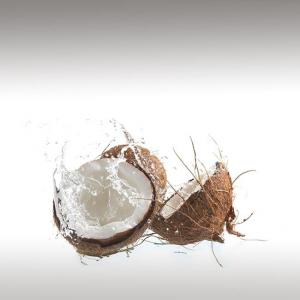

Naturally refreshing, Coconut Water has a sweet, nutty taste. Not to be confused withhigh - fat Coconut Milk or oil, Coconut Water is a clear liquid in the fruit’s center.
Coconut Water is the clear liquid inside young green Coconuts. In early development, it serves as a suspension for the endosperm of the Coconut during the nuclear phase of development. As growth continues, the endosperm matures into its cellular phase and deposits into the rind of the Coconut Meat.
Fresh Coconuts are typically harvested from the tree while they are green. A hole may be bored into the Coconut to provide access to the liquid and meat. In young Coconuts, the liquid and air may be under some pressure and may spray slightly when the inner husk is first penetrated.
In general, young and slightly immature Coconuts gathered from the Coconut tree after they reach about 5 - 7 months of age for the purpose of reaping its drink. Coconuts which have fallen to the ground are susceptible to rot and damage from insects or animals.
Each Coconut may contain about 200 to 1000 ml of water depending upon cultivar type and size. Any nuts younger than five months of age tend to be bitter in taste and devoid of nutrients.
Coconut Water has long been a popular drink in the tropical countries where it is available fresh, canned, or bottled.
Naturally refreshing, Coconut Water has a sweet, nutty taste. Not to be confused with high - fat coconut milk or oil, Coconut water is a clear liquid in the fruit’s center.
At home, raw tender Coconuts can be kept at room temperature for about 5 - 10 days. Once opened, its liquid soon turns sour and off - flavored due to intense enzymaticactivity. Instead, store it inside the refrigerator if not used immediately.
Chemical structure:
The water is actually obtained by opening a tender, green, healthy, and undamaged Coconut. Inside, it's clear liquid is sweet, and sterile and composed of unique chemicals such as sugars, Vitamins, minerals, electrolytes, enzymes, amino acids, cytokine, and phyto - hormones.
Coconut Water carries a very good amount of electrolyte potassium. 100 ml of Water has 250 mg of potassium and 105 mg of sodium. Together, these electrolytes help replenish electrolyte deficiency in the body due todiarrhea (loose stools).
Further, fresh Coconut Water has a small amount of Vitamin - C (Ascorbic acid). It provides about 2,4 mg or 4% of RDA. Vitamin C is a water - soluble ant-oxidant.
Coconut Water is the clear liquid inside young green Coconuts. In early development, it serves as a suspension for the endosperm of the Coconut during the nuclear phase of development. As growth continues, the endosperm matures into its cellular phase and deposits into the rind of the Coconut Meat.
Fresh Coconuts are typically harvested from the tree while they are green. A hole may be bored into the Coconut to provide access to the liquid and meat. In young Coconuts, the liquid and air may be under some pressure and may spray slightly when the inner husk is first penetrated.
In general, young and slightly immature Coconuts gathered from the Coconut tree after they reach about 5 - 7 months of age for the purpose of reaping its drink. Coconuts which have fallen to the ground are susceptible to rot and damage from insects or animals.
Each Coconut may contain about 200 to 1000 ml of water depending upon cultivar type and size. Any nuts younger than five months of age tend to be bitter in taste and devoid of nutrients.
Coconut Water has long been a popular drink in the tropical countries where it is available fresh, canned, or bottled.
Naturally refreshing, Coconut Water has a sweet, nutty taste. Not to be confused with high - fat coconut milk or oil, Coconut water is a clear liquid in the fruit’s center.
At home, raw tender Coconuts can be kept at room temperature for about 5 - 10 days. Once opened, its liquid soon turns sour and off - flavored due to intense enzymaticactivity. Instead, store it inside the refrigerator if not used immediately.
Chemical structure:
The water is actually obtained by opening a tender, green, healthy, and undamaged Coconut. Inside, it's clear liquid is sweet, and sterile and composed of unique chemicals such as sugars, Vitamins, minerals, electrolytes, enzymes, amino acids, cytokine, and phyto - hormones.
Coconut Water carries a very good amount of electrolyte potassium. 100 ml of Water has 250 mg of potassium and 105 mg of sodium. Together, these electrolytes help replenish electrolyte deficiency in the body due todiarrhea (loose stools).
Further, fresh Coconut Water has a small amount of Vitamin - C (Ascorbic acid). It provides about 2,4 mg or 4% of RDA. Vitamin C is a water - soluble ant-oxidant.
Submitted by OperaDreamhouse (June 23, 2015)
Olive Squalane ☸ Ingredients ☸ Base / General
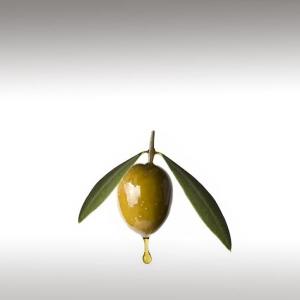

Olive Squalane is a high purity vegetable squalane obtained from Olives. Olive Squalane is a botanical lipid that mirrors human lipids in molecular structure and weight (scientists found that the skin's sebaceous glands synthesized approximately 10 - 12% Squalane). The Olive Squalane is the plant - derived alternative to the animal - derived (shark liver oil) of the past.
Squalene is found naturally in thesebum of human skin and is believed to lubricate and protect skin.
Squalene is found naturally in thesebum of human skin and is believed to lubricate and protect skin.
Submitted by OperaDreamhouse (June 23, 2015)
Olive Squalane ☸ Ingredients ☸ Beauty / Cosmetics


This valuable lipid is extremely compatible with the skin and is safe for all skin types, making it a great choice for regenerative skin care, and anti-agingproducts.
Submitted by OperaDreamhouse (June 23, 2015)
Amaranth Seed Oil (Amaranthus Caudatus) ☸ Base oils ☸ Base / General
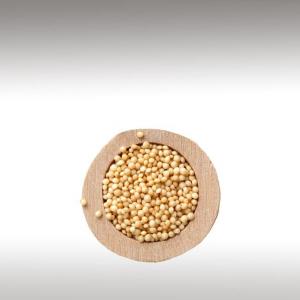

Amaranthus, collectively known as Amaranth, is a cosmopolitan genus of annual or short lived perennial plants. Amaranth is grown in Asia and the Americas and harvested primarily for its grain, which is used as a food source forbread, pasta, and infant food.
Amaranth seed is called a grain by many, but technically it isn’t a truegrain. Amaranth tastes similar to other grains, and is used in much the same way. Quinoa is also in the Amaranthaceae family, and is also a pseudograin.
Catkin - like cymes of densely packed flowers grow in summer or autumn. Approximately 60 species are recognized, with inflorescences and foliage ranging from purple and red to green or gold. Members of thisgenus share many characteristics and uses with members of the closely related genus Celosia.
However, there are several other Amaranthus that are grown in other places of the world, that are used as food, both for the leaves and the seed.
Grain Amaranths produces a protein - rich seed. Each seed is only about 1/2 or 1/3 the size of a Quinoa seed, but each plant can produce up to 100,000 seeds or more, and they are easy to harvest.
Seeds from wild varieties are black, and seeds from the cultivated varieties are lighter in color (white, light brown, and pinkish - red seeds). Amaranth seems to be enjoying a slight rise in popularity.
"Amaranth" derives from Greek (Amarantos), "Unfading" with the Greek word for "Flower"(Anthos), factoring into the word's development as "Amaranth." The more accurate "Amarant" is an archaic variant.
Conventional, organic. Symbol of immortality in Greek, Amaranth is the oldest cultivated plant reputed never to fade. Obtained from Amaranth seeds. Contains Over 60% of unsaturated acids. Mainly composed of linoleic acid (omega-6) and oleic acid (omega-9). High content in Squalane.
The oil we use has been obtained via the latest and arguably most efficient method of extraction - Supercritical CO2. Carbon Dioxide which has been pressurised until it has become "Supercritical" (in two states - gas and liquid properties at the same time) is passed through the plant material acting like a solvent pushing out all of the raw active agents.
Once all of the constituents have been extractedthe pressure is released, the Carbon Dioxide becomes gas again leaving no trace, and you’re left with a complex extract including many particles you wouldn’t get through steam distillation.
Chemical structure:
Amaranth oil is a great of value. It contains about 77 % of non - saturated fatty acids (about 50 % of linolenic and linoleic acids, squalene and Vitamin E in the rare form of tocotriene which takes part in the biosynthesis of cholesterol.
Most importantly it is an almost unique extract in that is has up to 12% Squalene content.
Fatty oil with a high content of polyunsaturated fatty acids including 25 - 35% oleic acid and 42-52% linoleic acid as well as a 6 - 12% Squalene content.
Amaranth seed is called a grain by many, but technically it isn’t a truegrain. Amaranth tastes similar to other grains, and is used in much the same way. Quinoa is also in the Amaranthaceae family, and is also a pseudograin.
Catkin - like cymes of densely packed flowers grow in summer or autumn. Approximately 60 species are recognized, with inflorescences and foliage ranging from purple and red to green or gold. Members of thisgenus share many characteristics and uses with members of the closely related genus Celosia.
However, there are several other Amaranthus that are grown in other places of the world, that are used as food, both for the leaves and the seed.
Grain Amaranths produces a protein - rich seed. Each seed is only about 1/2 or 1/3 the size of a Quinoa seed, but each plant can produce up to 100,000 seeds or more, and they are easy to harvest.
Seeds from wild varieties are black, and seeds from the cultivated varieties are lighter in color (white, light brown, and pinkish - red seeds). Amaranth seems to be enjoying a slight rise in popularity.
"Amaranth" derives from Greek (Amarantos), "Unfading" with the Greek word for "Flower"(Anthos), factoring into the word's development as "Amaranth." The more accurate "Amarant" is an archaic variant.
Conventional, organic. Symbol of immortality in Greek, Amaranth is the oldest cultivated plant reputed never to fade. Obtained from Amaranth seeds. Contains Over 60% of unsaturated acids. Mainly composed of linoleic acid (omega-6) and oleic acid (omega-9). High content in Squalane.
The oil we use has been obtained via the latest and arguably most efficient method of extraction - Supercritical CO2. Carbon Dioxide which has been pressurised until it has become "Supercritical" (in two states - gas and liquid properties at the same time) is passed through the plant material acting like a solvent pushing out all of the raw active agents.
Once all of the constituents have been extractedthe pressure is released, the Carbon Dioxide becomes gas again leaving no trace, and you’re left with a complex extract including many particles you wouldn’t get through steam distillation.
Chemical structure:
Amaranth oil is a great of value. It contains about 77 % of non - saturated fatty acids (about 50 % of linolenic and linoleic acids, squalene and Vitamin E in the rare form of tocotriene which takes part in the biosynthesis of cholesterol.
Most importantly it is an almost unique extract in that is has up to 12% Squalene content.
Fatty oil with a high content of polyunsaturated fatty acids including 25 - 35% oleic acid and 42-52% linoleic acid as well as a 6 - 12% Squalene content.
Submitted by OperaDreamhouse (June 22, 2015)
Page 20 of 48

